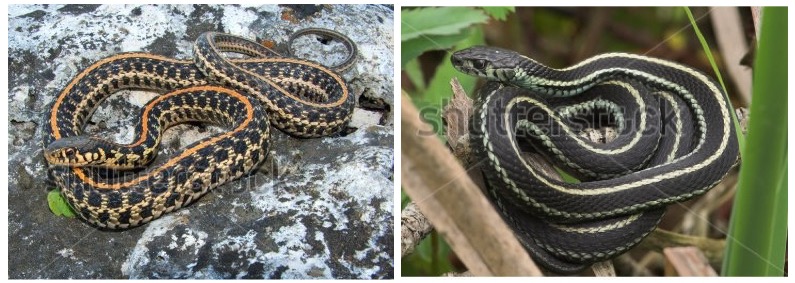The study from Example 9.5.5 of the textbook was conducted by quantifying how a garter snake’s ability to escape predation is affected by both the color pattern on its back and by its behavior.
Garter snakes have a wide range of color patterns, from checkered patterns (left image below) to patterns with bold longitudinal stripes (right image below).

Likewise, when garter snakes flee a predator they also exhibit a wide range of behaviors. Some flee directly away from the predator while others make a number of reversals in direction while fleeing.
Brodie (1992) found that certain behaviors and color patterns work well together as a means of avoiding predation while others do not. Specifically, he found that striped snakes that flee directly away from predators survive well but striped snakes that exhibit reversals during fleeing do not. Likewise, checkered snakes that exhibit reversals during fleeing survive well but checkered snakes that flee directly do not. Thus, if you are a striped snake you should flee directly but if you are a checkered snake then reversing your direction while fleeing is a good idea.
The calculation in Example 9.5.5 of the textbook illustrates these biological findings. The directional derivative of F(R,S) when both R and S increase together is negative. This reflects the fact that a snake with increased stripedness and also an increased number of reversals during fleeing will have a reduced survivorship.
References
Brodie, E. III. 1992. Correlational selection for color pattern and anti predator behavior in the garter snake Thamnophis ordigoides. Evolution 46:1284-1298